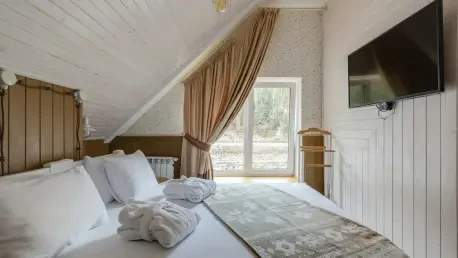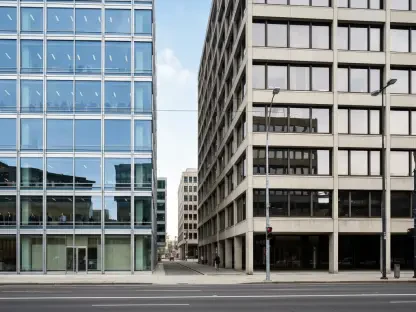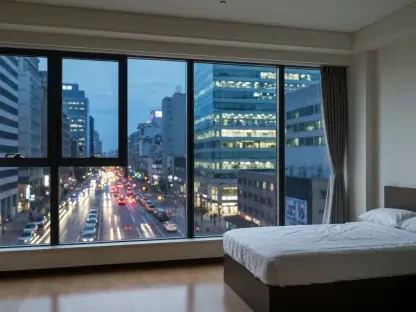In the dynamic world of interior design, where trends ebb and flow with the seasons, linen remains a constant favorite due to its timeless elegance and eco-friendly attributes. As a fabric, linen has endured for thousands of years, cherished by various cultures for its luxurious yet practical qualities. Its unique combination of aesthetic appeal, historical significance, and environmental benefits positions linen as an enduring choice for interior designers seeking to balance tradition with modern sustainability. This article explores the multifaceted reasons why linen continues to captivate designers, accentuating its deployment in contemporary settings.
Linen’s Rich Legacy and Unmatched Tactile Qualities
Historical Significance and Timeless Charm
Linen, derived from the fibers of the flax plant, has woven its way through human history with lasting impact. Known for its association with wealth, purity, and finesse, linen was used in ancient civilizations for clothing, religious rituals, and home decor. Its narrative of opulence and grace is still evident today, as the fabric retains a cherished place in many cultures. Linen’s imperfections, such as natural creases and wrinkles, transcend conventional textile norms, embodying an elegance that celebrates authenticity over flawlessness. These tactile attributes make linen a sophisticated choice, whether draping a room in casual charm or infusing it with understated refinement.
The production of linen is a meticulous process that requires skillful craftsmanship. The scarcity of high-quality flax, the primary component of linen, adds to its exclusivity. Renowned designer Bernie de Le Cuona compares premium linen to the world’s finest cashmere, demonstrating linen’s stature in the global textile market. Each fold and crease tells a story of sophistication, offering homeowners a unique aesthetic that blends rustic authenticity with elegance. Linen’s ability to convey character while retaining a refined aura makes it ideal for various design styles, from contemporary urban lofts to country retreats.
Linen’s Adaptability in Modern Design
In modern interior design, linen’s versatility extends beyond its physical attributes, embracing its ability to adapt to diverse applications. Leading designers extol linen’s timeless elegance, subtle luxury, and ability to enhance spaces with depth and texture. Visionaries like Thea Speke and Jessica Summer highlight linen’s organic look and tactile allure, showcasing its adaptability across various settings. Linen’s capacity to absorb colors more richly than many other textiles allows it to complement a wide range of interior themes. This property enhances its versatility, enabling both subtle and bold design choices that enhance aesthetic appeal.
Linen’s adaptability is showcased using a vast array of applications, from upholstery and curtains to bed canopies and wall coverings. The textile’s natural ability to absorb color provides a wealth of richness and hues, complementing its inherent qualities. Designers appreciate linen’s ability to integrate smoothly into both modern and traditional spaces. Whether chosen for its ability to evoke warmth and texture or its eco-friendly properties, linen continues to be a versatile choice in diverse design projects. Through clever use of color and texture, linen brings life and character to spaces, offering designers an invaluable tool to create bespoke environments tailored to individual preferences.
The Environmental Promise and Practical Benefits of Linen
Linen’s Eco-Friendly Credentials
Linen’s environmental benefits substantially contribute to its enduring popularity among conscientious designers. Derived from flax, a crop known for its minimal irrigation needs and resilience, linen epitomizes sustainable material choice. This environmentally conscious aspect appeals to designers like Lucy Mayers, who advocate for the use of naturally sustainable materials in modern interiors. Linen’s production has a reduced environmental footprint compared to other textiles, aligning seamlessly with sustainable living ideals. Such qualities make linen perfect for creating interior spaces that emphasize comfort while maintaining an eco-conscious ethos.
Beyond its sustainable origins, linen also boasts natural antibacterial and hypoallergenic properties, making it a practical choice for domestic environments. Its ability to enhance air quality and reduce allergens in living spaces underscores its functionality. Linen’s durability further enhances its eco-friendly profile, providing long-term value over cheaper, less resilient textiles. Although linen may require a higher initial investment, its longevity presents significant savings over time. Homeowners benefit from a material that softens with each wash and acquires a unique patina, reducing the need for frequent replacements and minimizing environmental waste.
Longevity and Cost-Effectiveness
Linen’s renowned durability adds to its appeal, providing a long-term solution in interior design projects. This resilience ensures that even with frequent use, linen retains its charm and functional quality. Homeowners seeking sustainable investments for their living environments appreciate linen’s ability to withstand the test of time, gaining character rather than deteriorating with age. In reducing the frequency of textile replacements, linen contributes to environmental conservation while offering practical benefits. Its robust nature implies fewer replacements, leading to reduced costs for homeowners over the long run.
Cost-effectiveness is an intrinsic benefit of linen, given its intrinsic ability to age gracefully and maintain its integrity over time. The fabric’s durability means it is well-suited for various household applications, from seat covers to window treatments, offering versatility enhanced by its longevity. With each wash, linen continues to develop unique characteristics, ensuring that pieces remain visually appealing over time. As a one-time investment, linen exemplifies a practical and sustainable choice, ensuring living spaces not only look good but are also environmentally responsible and economically sound.
Maximizing Linen’s Aesthetic Through Creative Application
Expert Techniques and Diverse Applications
Designers have long recognized the endless possibilities linen offers, integrating the textile into various elements of interior design with innovative flair. From using antique Hungarian grain sacks in upholstery to creating sumptuous linen curtains for opulent settings, linen’s potential spans wide and diverse applications. The designers featured in the industry provide insight into creative uses for linen, operating on the premise that linen’s versatility allows for stylistic experimentation. Utilizing linen to introduce texture and movement within interior spaces, designers reinvigorate spaces with both aesthetic refinement and functional practicality.
Some of the most innovative implementations of linen come through its integration as wall coverings, echoing the luxury of cashmere in tactile form. Designers including Angus Buchanan and Sarah Peake emphasize linen’s ability to be utilized in applications that demand durability and aesthetics alike. By weaving heavy linens for upholstery and light linens for window dressings, designers tap into the textile’s adaptability. Beyond its aesthetic appeal, linen also provides practical benefits like enhanced acoustics and insulation when used in creative ways throughout interior designs. Linen’s tactile engagement with spaces ensures it remains a mainstay in diverse design applications.
Expert Insights for Optimal Linen Use
For those intent on optimizing the allure of linen, expert recommendations like Lucy Mayers’ suggest employing hand screen printing methods over digital techniques, ensuring vividness and depth in the color of linen surfaces. This approach emphasizes color longevity and richness, harnessing linen’s innate ability to imbue rooms with warmth and vibrance. Designers also highlight the inherent ability of linen to convey softness and fluidity, making it perfect for drapery and embellishments that require both function and aesthetic beauty.
Angus Buchanan’s acknowledgment of linen’s exquisite draping properties and its tendency to accrue character with age further underscores its utility. Whether softening and enhancing the life within rooms or providing an elemental base with its textured feel, linen exudes both utility and beauty. As a result, linen’s flexible nature continuously attracts viewers and designers, embodying a dynamic quality that transcends seasonal design shifts. The textile serves as a versatile foundation upon which varied drama and subtlety in interior aesthetics can be built, solidifying its status as an indispensable design component.
Disputing Misconceptions and Embracing Linen’s True Nature
Addressing Common Misconceptions
Confronting misconceptions about linen is crucial for understanding and leveraging its full potential in modern interiors. One prevalent misunderstanding is the notion that linen’s tendency to crumple detracts from its value, giving it an overly casual appearance. Designers such as Jessica Summer counter this by suggesting that these natural imperfections infuse linen with elegance that suits a broad array of styles. By appreciating crumples as aspects of its character, linen is liberated from restrictive associations with rustic or traditional aesthetics, demonstrating its potential to blend seamlessly into both formal and contemporary contexts.
This narrative shift posits linen as a versatile textile capable of bridging disparate design themes, breaking free from misconceptions that limit its potential. Linen is appreciated in diverse settings, from quintessentially rustic homes to cosmopolitan environments, providing a sophisticated yet approachable design element. These fabrics’ authentic appeal continues to charm those seeking meaningful engagement between interior aesthetics and tactile experiences. By exploring the myriad expressions linen permits, designers can redefine traditional boundaries and fully appreciate its attributes.
Versatility Across Style and Functionality
The multi-dimensional functionality of linen allows it to contribute significantly to versatile design schemes, ensuring its enduring popularity in modern interiors. By embracing its natural properties, designers unlock an extensive range of possibilities that elevate both the form and function of living spaces. Linen’s tactile engagement provides a graceful backdrop for stylistic flourishes, neutralizing environmental distractions and enhancing aesthetic focus. This ability to harmonize disparate elements while remaining an appealing centerpiece underscores linen’s broad applicability in tailoring interior spaces to specific themes and preferences.
Recognizing and valuing the complexities within linen heightens appreciation for its diverse functionality. As emerging trends lean towards blending historical textures with modern aesthetics, designers increasingly turn to linen to unify and enhance interiors. This fabric succeeds in bringing warmth, texture, and movement, resulting in spaces that evoke comfort and charm. Understanding linen’s profound capabilities permits innovation and creativity, forging new frontiers in design exploration. Ultimately, linen’s versatility ensures that it remains an essential choice tailored to the richness of various stylistic narratives.
Linen’s Future in Design: A Timeless Essential
In the ever-evolving landscape of interior design, where trends shift with the seasons, linen stands out as a perennial favorite. Its enduring appeal lies in its timeless elegance and eco-friendly properties. Linen, a fabric with a rich history spanning thousands of years, has been adored by numerous cultures for its luxurious yet functional traits. It effortlessly combines aesthetic allure with historical importance, making it an ideal choice for those aiming to merge tradition with modern sustainability. Linen’s environmental benefits only enhance its desirability, as it aligns with growing trends toward eco-conscious design. The fabric exudes a natural charm that elevates any space it inhabits, offering a unique texture and breathability that few other materials can match. This delightful blend of qualities ensures linen remains a staple in contemporary interior design, captivating designers who appreciate its versatility and enduring grace. By maintaining its status in modern settings, linen exemplifies the harmonious balance of style and sustainability that is so crucial today.









